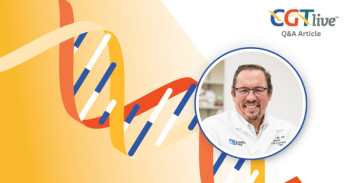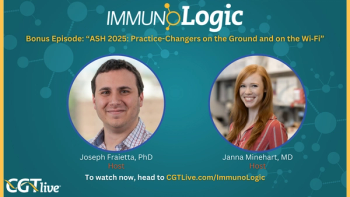
Centering Patient Choice in the Treatment of Sickle Cell Disease
Vivien Sheehan, MD, PhD, an associate professor of pediatrics at Emory University, discussed how patients should be able to choose to try the recently FDA-approved cell-based therapies for SCD when they are ready.
Over the past 8 years, 3 new options for the treatment of sickle cell disease (SCD) have been approved by the FDA, adding new choices for patients who previously knew only hydroxyurea. Of particular interest are the 2 new cell-based gene therapies, exagamglogene autotemcel (exa-cel, marketed as Casgevy) and lovotibeglogene autotemcel (lovo-cel, marketed as Lyfgenia).
At
CGTLive: Can you give some background information about your presentation at Tandem 2024?
Vivien Sheehan, MD, PhD: For decades, we had 1 therapy for SCD: hydroxyurea. Then, in the last 8 years we've had 3 FDA approved drugs. It's very exciting to have more options for our patients, however, that excitement is tempered by kind of the modest nature of the benefits of the new drugs, and also, the really slow uptake from the SCD patient community. Less than 3% are on a given novel second line therapy.
What were the key points you covered during your talk?
I first talked about hydroxyurea and how to optimize it.It does need to be pushed to maximum tolerated dose based on certain lab values, but even in doing that patient response to it varies. Some patients get very little benefit. Some providers look only at the fetal hemoglobin that's induced from hydroxyurea and forget that there are other nonfetal-hemoglobin benefits, such as reduction in white count and in inflammation, stickiness of the cells. I commented on that and then talked about the 3 FDA approved therapies, how to match them with the right patients. There are 2 strategies: We can look at the patient's symptoms and pair them with a drug that had that as a clinical endpoint or we can consider the quality of that patient's red cells, going to the next level and seeing what drives their particular SCD disease pathophysiology and pair it in a more red cell function manner.
How would you summarize the big picture takeaway of this?
The big take home message to me is that we need to have the decision to go forward with a cell-based therapy be the patient and their family's choice and not be paternalistic and say ‘You must try every FDA-approved therapy for SCD first.’ Not only is that inappropriate, but their level of benefit, even with good response does not equal that of a cell-based therapy, nor does transfusion. It's appropriate for families that want a more transformative therapy, something more closely approaching potentially a cure, to be able to go straight to a cell-based therapy, rather than try and fail everything that's out there for their disease.
Are there any major challenges in this area that you can discuss?
The challenges are right now are related to access. Who is sick enough to get this therapy?—having that gatekeeping attitude of “you must have this many pain crises, you must have this much organ damage”—whereas I would prefer we take a preventive approach and avoid all of those things and offer cell-based therapies to those who are ready for it. That that kind of gatekeeping is a concern. Furthermore, there’s the question of how it's going to be paid for? What will end up having to go to the company, what's going to be provided to hospitals for the actual care of the patient? All of this is going to potentially impact how many patients can access cell and gene therapy for their SCD.
Is there anything else you’d like to share?
There are other therapies in clinical trials for SCD, some very novel approaches. It definitely warrants watching to keep checking in and seeing whether more potent versions of existing drugs may come closer to having more definitive management of SCD, but it still needs to be, again, the family's decision what path they take.
This transcript has been edited for clarity.
REFERENCES
1. Sheehan V. Current and emerging pharmacological therapies for sickle cell disease. Presented at: 2024 Tandem Meetings, February 21-24, San Antonio, Texas.
Newsletter
Stay at the forefront of cutting-edge science with CGT—your direct line to expert insights, breakthrough data, and real-time coverage of the latest advancements in cell and gene therapy.





































